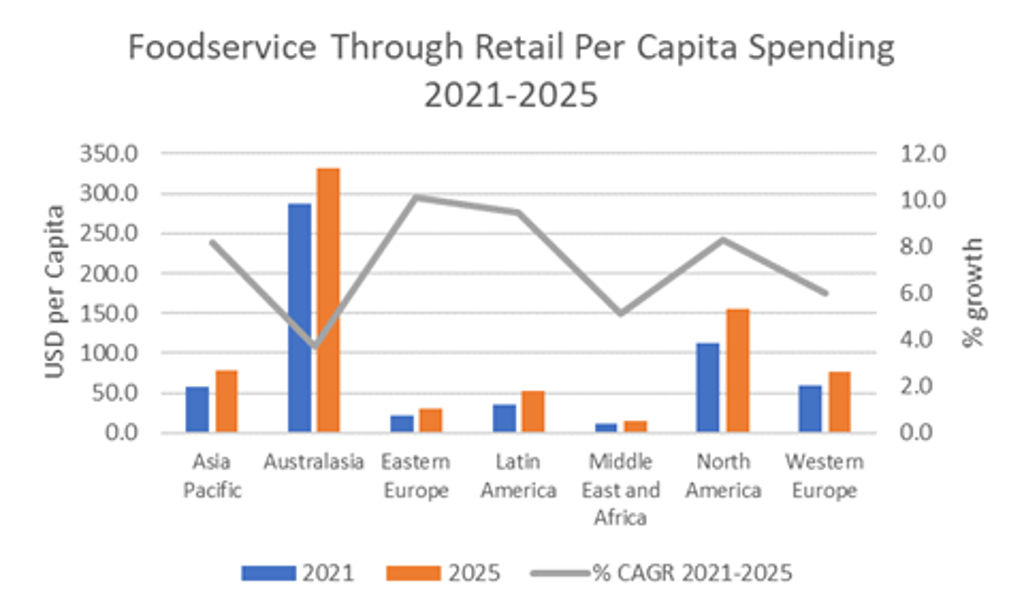A version of this article originally appeared in the online issue of Nation’s Restaurant News.
Recent reports have suggested that Amazon is trialling a service similar to Instacart in the UK, providing third party delivery fulfilment to at least two major supermarket chains and same-day delivery for its Amazon Prime customers. While Amazon has yet to confirm any details, the move makes sense, given the logistics giant’s capabilities and long history of operating third party ordering and logistics networks. For grocery retailers, the potential entry of Amazon into the third party delivery space is likely to accelerate a process already well underway, with a higher number of shopping trips starting on the phone and — from the end consumer perspective — bypassing physical stores altogether.
Delivery apps make it difficult for restaurants to find differentiation
This evolution parallels the same process already well underway in the restaurant space, with vast numbers of independent restaurants aggregated under a handful of third party delivery apps. While chains can drive traffic towards their own apps and exert control over how their orders are fulfilled, the task of differentiation is becoming significantly tougher for independents, with the process of discovery, ordering and fulfilment taking place entirely via third party apps. Over time, this could drive significant changes in the way restaurants are conceived and constructed, with specialised, delivery-only facilities serving affordable favourites such as chicken wings, noodles or pizza.
Grocery stores face the challenges of delivery aggregation
Grocery stores are also experiencing this process of aggregation. Grocery chains have numerous advantages that independent restaurants do not, such as a vast existing store footprint, significant buying power with suppliers, well-developed delivery networks and powerful brands. At the same time, much of that branding advantage has been built up over decades by regular in-store interactions with frequent customers.
E-commerce via third party delivery apps threatens that connection, with individual brands less able to stand out on a delivery app with dozens of grocery options. Third party delivery apps also continue to expand their own grocery capabilities, such as Instacart building its own network of automated warehouses or 15-minute delivery apps such as GoPuff or Getir expanding their infrastructure footprint.
New era of omnipresent delivery
Above all, the new era of omnipresent delivery is blurring the line between retail and foodservice formats. As a higher share of purchases begins on an app and fulfilled via third party delivery or takeaway/click-and-collect options, the distinction between a grocery store, a convenience store, a restaurant, or even a vending machine becomes less meaningful, as do strict demarcations between packaged and prepared food. While this has the potential to erode many operators’ hard-won competitive advantages, it also means a real opportunity for those able to serve the right needs with the right offer.
Reinventing grocery brands as meal facilitators
In the future, an increasing number of grocery retail brands will reinvent themselves as “meal facilitators,” transitioning from primarily stocking a range of packaged food and drinks with limited prepared foods to a much wider array of meal options such as meal kits, curated recipes, prepared items and restaurant meals.
One example of this evolution is Kroger’s recent move to partner with ghost kitchen operator Kitchen United to offer delivery and takeaway options within Kroger stores. Grocery retailers will look to leverage their vast outlet footprints, central locations and potential supply chain advantages in a future increasingly defined by delivery and prepared meals.
Greater share of takeaway within retail stores as boundaries continue to blur
Speed and affordability remain key differentiators in this new era, and grocery retailers’ existing assets, which often include central kitchens supplying a wide array of prepared meals daily, could prove to be real advantages. The addition of expanded takeaway options within stores could help to preserve daily footfall, allowing the in-store experience to continue to drive branding whilst also leveraging smartphone ordering for rapid delivery.
